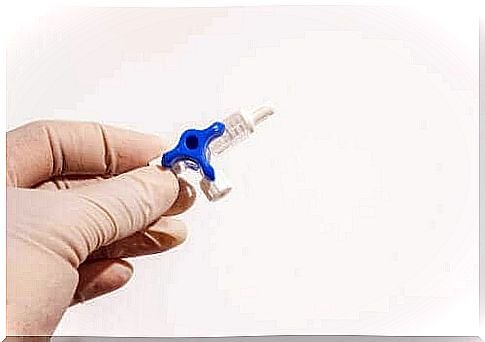Permanent Central Venous Access

To understand permanent central venous access, it is necessary to introduce the concept of central venous catheter. These are intravascular tubes that can be inserted into the large venous vessels in the chest and abdomen. In addition, the most used are the internal jugular, subclavian and femoral vein.
Professionals select the most suitable vein to create the access. Furthermore, they perform the procedure after first evaluating the complication rates that may develop in each case.
These complications can be classified as mechanical, thrombotic and infectious. However, most contraindications can usually be corrected or treated.
In addition, both in operating rooms and in critical patient units, the installation of a central venous catheter is a frequent situation. This is due to the fact that in both places the administration of various solutions, such as drugs and even parenteral nutrition, is required.
Due to the importance of these techniques, the insertion of these catheters must be performed by the anesthesiologist, surgeon or physician of the Intensive Care Unit (ICU).
Characteristics of permanent central venous tracts

First, it is important to define and clarify the concept of a central line. In summary, catheters are devices whose distal end must be located in the superior or inferior vena cava. That is, right before the entrance to the right atrium.
These catheters are called permanent when they can be implanted in the patient for a long time. Furthermore, it is important to mention that these cases will have a lower incidence of complications. The possibilities of vascular wall injuries are also reduced.
The main requirements of permanent central venous tracts are that they are soft and flexible. Likewise, a white ray, focused on its radiological control , is needed .
Thus, there are a number of materials most used for making catheters. These are as follows:
- Polyvinyl chloride. It is known to professionals as PVC.
- Polyethylene.
- Teflon polytetrafluoroethylene. Professionally termed as PTFE.
- Silicone.
- Fine hydrophilic polyurethanes.
Types of permanent central venous tracts
The different accesses can be classified into two types. On the one hand, there are the tunneled ones. On the other hand, those who have a subcutaneous implant. We will explain both types below.
Tunneled central venous catheter
It is the access that is usually used in patients who require treatment for prolonged periods. Furthermore, continuously or intermittently. Its composition usually includes silicone and fine hydrophilic polyurethanes.
The installation process of these accesses is done by creating a subcutaneous tunnel between the collarbone and the nipple. The distal end of the venous route reaches the right atrium via the external or internal jugular vein.
On the other hand, there is a classification of tunneled catheters. The following stand out:
- The Hickman-Broviack permanent central venous route. It is characterized by not having an anti-reflux valve.
- The Groshong permanent central venous route. Unlike the previous one, this one has an anti-reflux valve.
Permanent catheters travel a subcutaneous path between the skin entry site and the punctured vein.
In addition, there is a small Dacron cuff attached to the catheter, which induces an inflammatory reaction in the tunnel with subsequent fibrosis. Its function is to fix the catheter in the subcutaneous cellular tissue. In this way, the risk of infection is significantly reduced.
Permanent central venous access with subcutaneous implant

Generally speaking, this type of venous access consists of single or double light boxes or reservoirs, which function together with a catheter. The aforementioned access forms a tunnel until its entry into the access vein.
These routes are normally used in patients who require treatment for prolonged periods and either continuously or intermittently. One of the most common examples is chemotherapy treatment.
These accesses are installed connecting the proximal end of the catheter to the subclavian vein and right atrium. Furthermore, its distal side is joined to a titanium deposit or reservoir. This is located between the muscle and the subcutaneous tissue of the infraclavicular fossa.
Among all classifications of central catheters, this type is the one with the lowest number of infections. This is because the device is located under the surface of the skin.









